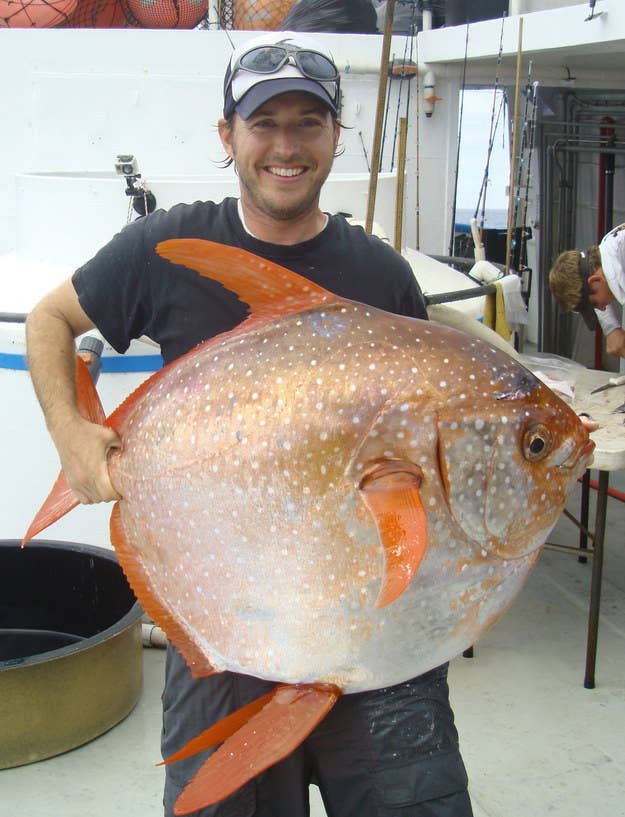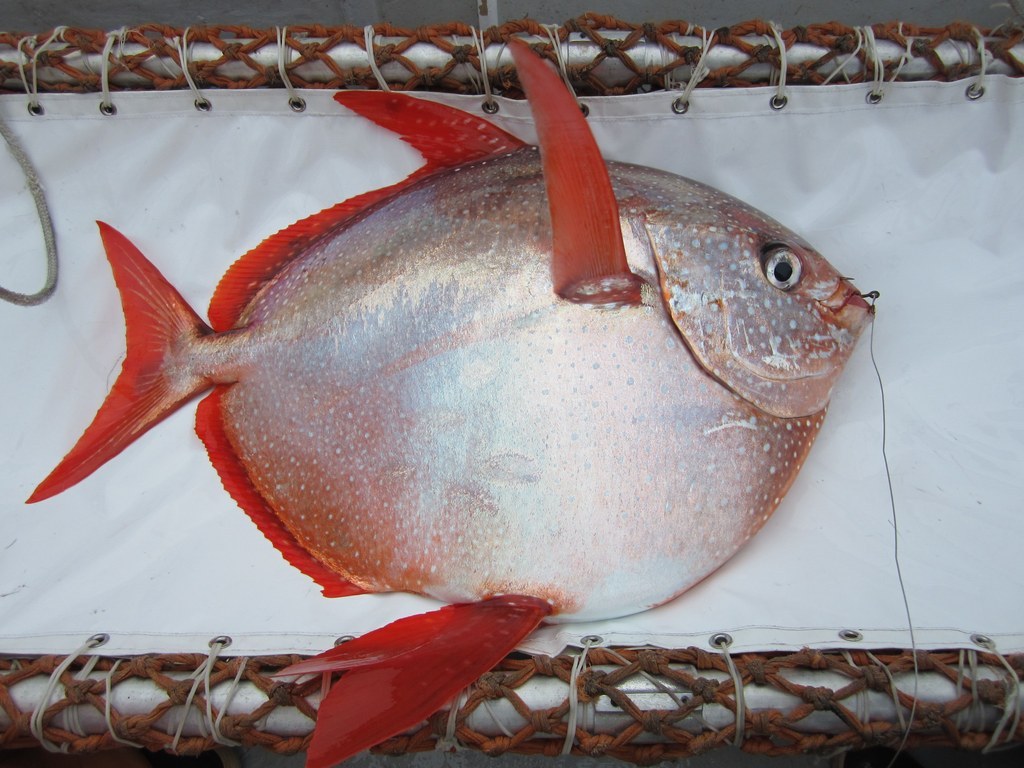This is an opah, and it's the first fish known to be fully warm-blooded.

Warm-blooded animals, like mammals and our feathered friends, generate and conserve their own body heat.
The body temperature of a cold-blooded critter like a fish, though, relies on its surroundings. Some, like swordfish and marlins, are capable of selectively warming their eyes or brains for a vision boost while hunting, according to Ed Yong at National Geographic.
Tuna and a few shark species similarly heat up their swim muscles to amp up their speed, though they eventually cool off enough to have to backtrack closer to the surface to thaw.
But unlike its brethren, the opah is the only fish that distributes warmth throughout its entire body, including its brain and heart, giving it a metabolic advantage — and competitive edge — over colder-blooded species.
The secret is the opah's gills, which contain an elaborate net of blood vessels that help maintain its heat.

After tagging opah with temperature sensors, NOAA researchers discovered that their body temperature stays an average of 5 degrees Celsius warmer than the water surrounding them, even in the bitterly cold depths of 1,300 feet.
A sampling of gill tissue revealed a dense network of veins and arteries called rete mirabilia (Latin for "wonderful nets"), which uses a process called counter-current heat exchange.
In simplest terms, warm blood moving away from the core heats cooler water returning from the gills' surface. Fat also further insulates the gills and muscle tissues.
So while the opah appears to be a lumbering beast, it's actually an active predator.

